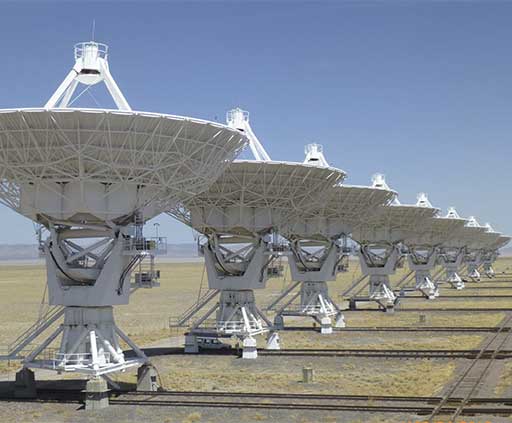
One of the biggest mysteries in modern astrophysics is that the overwhelming bulk of matter in the universe is "dark," made up of unknown particles and visible to us only through its gravitational influence. In this project, students will use modern data from the U.S.'s biggest radio telescope - the Karl G. Jansky Very Large Array in New Mexico (pictured) - and the Spitzer Space Telescope to try to prove the existence of dark matter.
The team will begin with observations of the motions gas in galaxies like the Milky Way, recently observed by the Very Large Array. Using these data, they will write python programs to measure how fast the galaxy spins, and then to solve for the mass needed to hold together a galaxy spinning so quickly. After "weighing" galaxies in this way, the students will compare their masses to the amount of light in stars and gas. In this way, students will use modern data to recreate one of the most fundamental astronomical results of the last century using data from some of the best telescopes in the world.